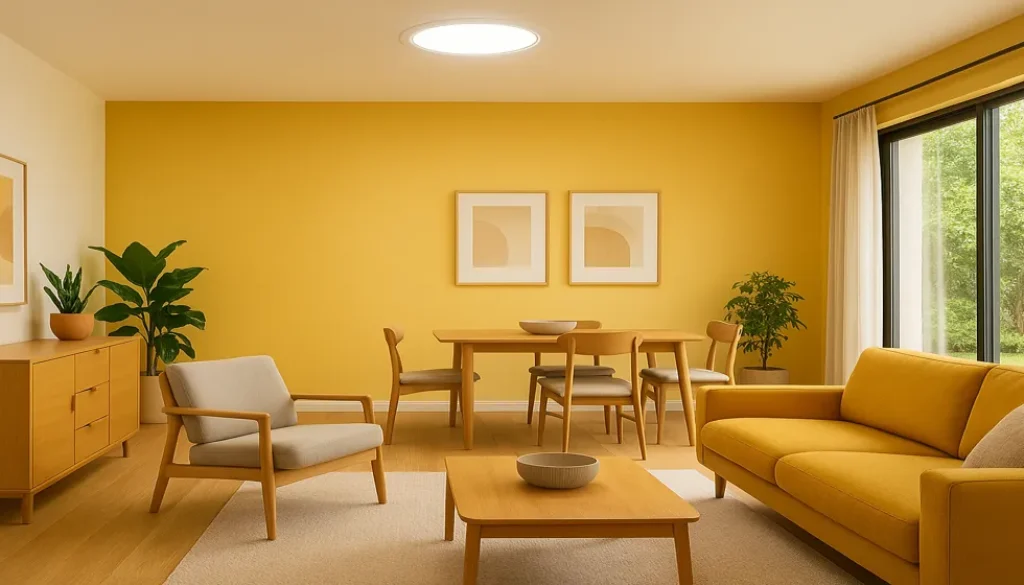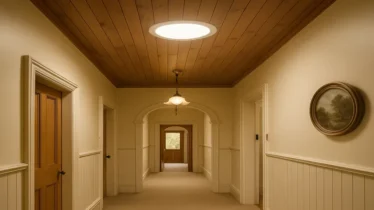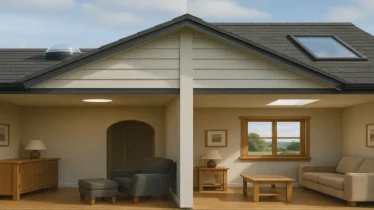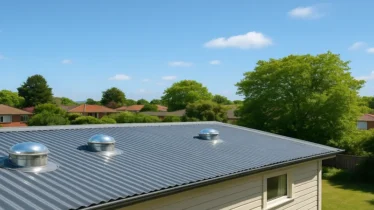Sun Tubes and Passive Design: Creating Climate-Resilient Homes
As climate change impacts intensify, creating climate-resilient homes has become a priority for Wellington homeowners. Passive design principles, which optimise a home’s energy efficiency by working with natural resources like sunlight and airflow, are at the forefront of this movement. Sun tubes are a key element of passive design, bringing natural light into interior spaces while reducing reliance on artificial lighting.
In this article, we’ll explore how sun tubes integrate with passive design principles to create homes that are both sustainable and comfortable.
1. What is Passive Design?
Passive design involves constructing or modifying a home to maximise natural energy sources, such as sunlight and wind, to regulate temperature and lighting. Key principles include:
- Optimising Natural Light: Reducing reliance on artificial lighting by harnessing sunlight.
- Thermal Efficiency: Retaining heat in winter and reducing heat gain in summer.
- Ventilation: Using airflow to maintain indoor comfort.
Why Passive Design Matters in Wellington
Wellington’s climate, with its mix of cool winters and breezy conditions, makes passive design an ideal strategy for improving energy efficiency and comfort.
2. How Sun Tubes Support Passive Design
Sun tubes are a natural fit for passive design, offering numerous benefits that align with its principles:
a) Harnessing Natural Light
- Sun tubes capture sunlight through a rooftop dome and channel it into interior spaces via highly reflective tubing.
- They deliver soft, even lighting without introducing excessive heat.
b) Reducing Energy Consumption
- By providing daylight during the day, sun tubes minimise the need for artificial lighting, lowering electricity use.
c) Improving Thermal Comfort
- Unlike traditional skylights, sun tubes are designed to transfer light without significant heat gain or loss, maintaining indoor temperatures.
Fact:
Homes incorporating passive design elements like sun tubes can reduce energy usage by up to 40% annually.
3. Innovative Uses of Sun Tubes in Passive Design
To truly maximise the benefits of passive design, think beyond conventional placements. Here are creative ideas for integrating sun tubes into your home:
a) Multi-Functional Zones
- Combine sun tubes with storage spaces, like pantries or laundry rooms, where functionality meets energy efficiency. Natural light can improve visibility and reduce reliance on artificial lighting in these overlooked areas.
b) Transitional Spaces with a Design Twist
- Instead of simply lighting a hallway or staircase, consider pairing sun tubes with reflective elements like polished floors or mirrored walls. This amplifies light distribution and adds an architectural element to passive design.
c) Light Layering in Shared Areas
- In living rooms, use sun tubes to complement thermal mass materials like brick or concrete walls. These materials absorb heat during the day and release it at night, working in harmony with passive principles.
d) Brightening Activity Nooks
- Create well-lit corners for specific activities, like a reading nook near a windowless wall or an indoor herb garden under a sun tube. These unique applications enhance everyday living while leveraging daylight efficiently.
e) Invisible Helpers
- Install sun tubes in hidden zones like closets or utility areas where people rarely think about natural lighting. The functional improvement can be surprisingly impactful in everyday life.
4. Combining Sun Tubes with Other Passive Design Features
For optimal results, pair sun tubes with these passive design strategies:
a) Insulated Windows
- Double-glazed or low-E windows complement sun tubes by reducing heat loss and improving thermal efficiency.
b) Cross-Ventilation
- Pair sun tubes with operable windows to ensure fresh airflow and maintain indoor comfort.
c) Thermal Mass Materials
- Use materials like concrete or stone that absorb and release heat to stabilise indoor temperatures.
Tip:
A Wellington architect recommends placing sun tubes near thermal mass walls to amplify natural lighting without compromising heat control.
5. Long-Term Benefits of Sun Tubes in Passive Design
By integrating sun tubes into your passive design strategy, you’ll enjoy several lasting benefits:
a) Reduced Carbon Footprint
- Lower energy consumption translates into fewer greenhouse gas emissions, making your home more sustainable.
b) Cost Savings
- Save on electricity bills by reducing the need for artificial lighting.
c) Increased Property Value
- Homes with energy-efficient features like sun tubes are more appealing to buyers, increasing resale value.
6. Call-to-Action
Transform your Wellington home into a climate-resilient sanctuary with sun tubes. Embrace passive design principles to save energy, lower costs, and create a more sustainable future. Contact us today to explore your options and connect with trusted installers.




